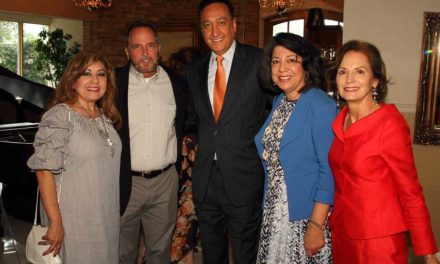Why is San Antonio the major center for Mexican American civil rights? The establishment of the Mexican American Civil Rights Institute in 2019 here suggests so. Is it because Henry Cisneros, PhD, became the first Mexican American mayor here in the 1980s after over 150 years of no Mexican-descent mayor? Or is it because Willie Velasquez established the Southwest Voter Registration Project here in the same decade?
All these choices are wrong. Let’s go back 100 years. In 1921, the Orden Hijos de America (Order Sons of America) was founded on October 13, 1921. It was the first major Mexican American civil rights organization in the nation. There had been mutual aid societies, labor unions, and leftist groups across Texas and US before this but this was the first to focus on civil rights.
The year 1921 followed the end of World War I. Some of the OSA founders were veterans who served in rat-infested trenches splattered with blood. The average life span for those on the Western front was thirty to fifty days. When Mexican American and Mexican men returned (yes, immigrants were allowed to fight) they encountered increasing racial segregation and found “No Mexicans Allowed” signs in restaurants and hotels. Certain jobs were closed to them and they were paid less than whites. In politics there were no Mexican American elected officials in the city. There was no respect.
So veteran John Solis and others started talking over barbeque at an Helotes, Texas ranch. Eventually they held their first formal meeting on October 13, 1921 and founded the OSA. Perhaps the devastation and deaths on the West Side of town where most Mexican-descent families lived caused by the San Antonio flood shortly before further prompted them. While Solis was not highly educated (decades later he went on to obtain his college degree), he sought the counsel of Santiago Tafolla Sr., a bilingual district court clerk, and the reportedly well-read Ramon Carbajal, a barber. Likewise, they sought the advice of Clemente Idar of Laredo, a civil rights leader, journalist, and AFL labor organizer.
Idar’s family in Laredo had organized the First Mexican Congress in 1911 to address lynching, rising segregation, and the deterioration of the Spanish language. While over 300 attended the conference from across Texas and Mexico, highways did not exist yet, cars were not affordable, and the telephone hardly existed. World War I fostered these transportation and communication systems.
In the 1920s San Antonio was the largest and most prosperous Texas city. Moreover, it had the largest Mexican population in the US. Los Angeles was a minor city. The Mexican Revolution populated San Antonio in the 1910s and 20s and Mexican immigration boomed in the 1920s. The Mexican-descent population was subordinated and poor but a small bilingual middle class was emerging of which Solis, Tafolla, and attorney MC Gonzales were part.
With Idar’s direction, the OSA developed a detailed constitution. The purpose of the OSA was “to use their influence in all fields of social, economic, and political action in order to realize the greatest enjoyment possible of all the rights and privileges and prerogatives extended by the American constitution.” In other words, Mexican Americans wanted to be treated as US citizens without racism.
The OSA founded seven chapters in South Texas including Corpus Christi. It also led to the founding of the Order Knights of America in San Antonio and the Latin American Citizens League in the Valley after 1927. By 1929, these organizations united to establish the League of United Latin American Citizens (LULAC) founded in Corpus Christi. San Antonio–not Corpus Christi– initiated this movement and LULAC led the Mexican American civil rights movement across the nation after 1921. Corpus Christi was a convenient location and prevented leadership conflicts between San Antonio and the Valley.
So many other organizations were founded in the city but the OSA was the root. That is why Mexican American civil rights matter to San Antonio then and now.
San Antonio: Capital of Mexican American Civil Rights Organizing










